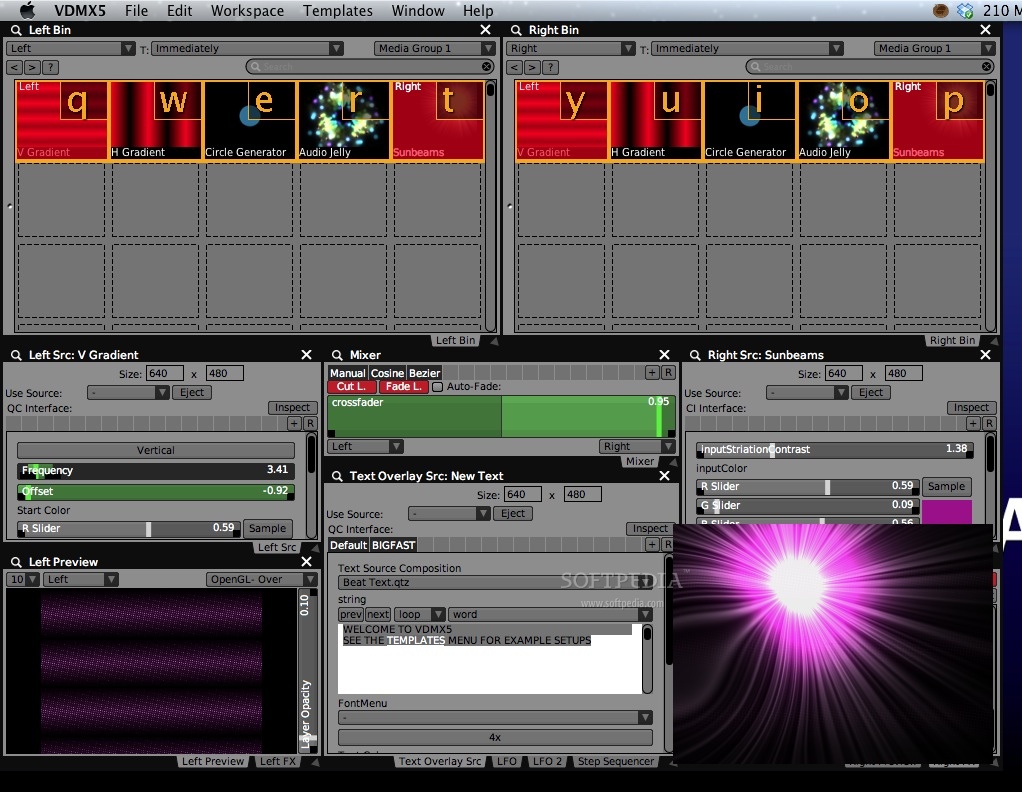

#Vdmx osc code
Using this code and the reference documentation as a guide, OscP5 can easily be added to other existing Processing sketches. The key details are the elements in the code related to Syphon: Setting an ip address of “127.0.0.1” will send data between applications on the same computer. In the VDMX preferences under OSC you can configure the “input” to receive from as well as the “output” ip addresses / ports to send to. Within VDMX the UI Inspector is typically used for configuring the OSC receivers and senders for each individual interface item.įor this tutorial we will first use the Control Surface plugin to set up two way communication with “oscP5sendReceive” using the Comm Display plugin in VDMX and the console in Processing to show read-outs of values received by the respective applications.
#Vdmx osc how to
The “oscP5sendReceive” example sketch demonstrates how to both send and receive values in Processing. Tip: Visit to find lots of examples of GLSL shaders that can run natively in VDMX as real-time generators and FX, and sent over Syphon to Processing. If needed, an individual Processing sketch can use multiple SyphonClient objects and specify which Syphon servers that they would like to receive from.

#Vdmx osc software
Though Processing doesn't provide an SDK for other developers to use their “sketches” as documents that can be rendered in other host applications (like Quartz Composer or Vuo), it is possible to easily connect your creations to other video software such as VDMX by using the Syphon (for video) and OSC (for data, such as numbers, colors and strings) protocols. You can look online to find hundreds of examples and they provide wonderful educational materials to help you get started with learning how to write code to make art. One of the most popular creative coding languages being used today is known as Processing, a free, open-source development environment with an extensive community of amazing artists and technologists around the world. While VDMX offers many ways to extend its capabilities with code by Quartz Composer, Vuo and writing your own custom interactive GLSL shaders, there are times when you may need to use a video generator, image processor, or data controller that for whatever reason requires using a lower level programming toolkit for some aspect of your live performance or installation.


 0 kommentar(er)
0 kommentar(er)
